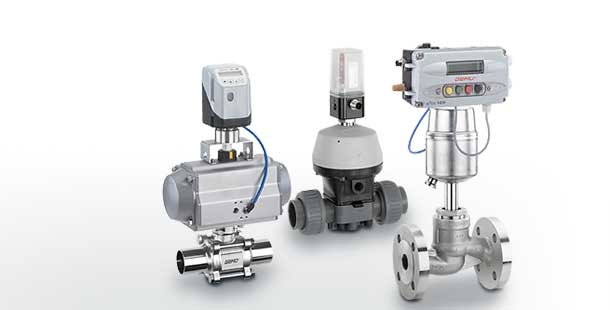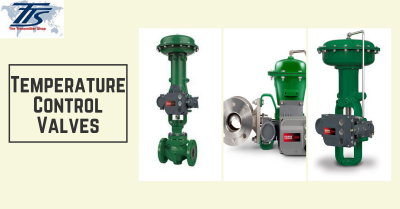Selecting the Right Control Valves: An Overview to Optimal System Efficiency
Selecting the Right Control Valves: An Overview to Optimal System Efficiency
Blog Article

Maximize Power Cost Savings and Comfort With Advanced Building Automation Controls
In the world of modern architecture and center management, the combination of sophisticated building automation regulates stands as a pivotal innovation. By harnessing the power of automation, buildings can adapt, react, and evolve in ways that were when unbelievable.
Power Efficiency Perks
Power efficiency advantages can significantly minimize power usage and operational prices in structures. Energy-efficient systems, such as advanced building automation controls, can maximize the usage of resources like heating, air conditioning, and illumination, leading to reduced power costs over time.
In addition, improved energy performance can extend the life-span of structure devices and systems. By operating extra effectively, heating and cooling systems, lighting fixture, and various other building parts experience much less deterioration, resulting in decreased maintenance and substitute expenses. Additionally, energy-efficient structures commonly command greater residential property worths and rental rates, offering lasting monetary advantages to owners.
In addition, power effectiveness can enhance passenger convenience and efficiency. Correctly managed indoor settings with optimal illumination and thermal conditions develop a more favorable and pleasurable workspace, resulting in improved worker complete satisfaction and performance. Generally, the energy effectiveness advantages connected with sophisticated building automation controls are diverse, including price financial savings, ecological stewardship, and owner well-being.
Improved Convenience Control
Enhancing convenience control in building settings calls for a sophisticated combination of sophisticated automation systems for optimal passenger health. By making use of advanced building automation controls, facilities can customize the indoor environment to meet the particular requirements and preferences of residents. These systems allow exact law of ventilation, illumination, and temperature level, developing a efficient and comfortable atmosphere. Occupant fulfillment and performance are very closely connected to thermal convenience, making it necessary to have systems in position that can adapt to changing problems in real-time.
By integrating these advanced controls, buildings can not just enhance convenience however also enhance power effectiveness by optimizing system operations based on real tenancy and use patterns. Ultimately, prioritizing resident comfort via advanced automation systems leads to a more satisfying and healthier indoor environment.
Functional Performance Improvements

In addition, the application of real-time tracking and analytics tools enables structure drivers to recognize energy inefficiencies and operational anomalies without delay. By constantly checking energy usage patterns and system efficiency metrics, adjustments can be made in real-time to enhance energy consumption and make sure peak functional effectiveness. control valves. Furthermore, integrating need action techniques right into building automation controls can additionally enhance functional performance by dynamically changing power usage based upon grid problems and pricing signals
Indoor Environment Optimization
Reliable interior climate optimization is a fundamental facet of structure automation controls, guaranteeing passengers' convenience and well-being while making the most of power savings. By utilizing advanced sensing units and controls, building automation systems can constantly keep track of and adjust temperature level, moisture degrees, air high quality, and air flow to develop an optimum indoor environment. Keeping constant and comfy conditions not only boosts resident fulfillment but likewise increases productivity and overall health.
Interior environment optimization also read more plays an essential duty in energy efficiency. By fine-tuning air flow, cooling, and heating systems based upon real-time information and tenancy patterns, building automation controls can considerably reduce power usage - control valves. Carrying out approaches such as demand-controlled ventilation and thermal zoning can assist reduce power waste while guaranteeing that each area of the structure obtains the necessary conditioning.

Sustainable Atmosphere Creation
Structure automation regulates not only maximize indoor climate problems for power performance and occupant convenience yet likewise lay the structure for developing a lasting environment through calculated monitoring of systems and resources. By integrating innovative building automation technologies, such as sensing units, actuators, and smart software program, centers can keep an eye on and adjust power use in real-time to reduce waste and decrease their carbon footprint. These systems make it possible for predictive upkeep, determining prospective issues before they intensify and maximizing equipment performance to improve long life and efficiency.
Moreover, lasting atmosphere production expands beyond energy monitoring to incorporate water preservation, waste decrease, and interior air high quality improvement. Building automation controls can manage water use, identify leakages, and guarantee appropriate garbage disposal techniques, adding to overall sustainability efforts. Additionally, by regulating and monitoring ventilation and their website purification systems, these technologies boost passenger health and wellness and productivity while lowering power intake related to heating and cooling procedures.
Conclusion
In conclusion, progressed structure automation controls offer substantial advantages in terms of energy cost savings, comfort control, functional performance, interior environment optimization, and developing a sustainable environment. By applying these controls, buildings can achieve optimum efficiency while minimizing energy usage and enhancing passenger convenience. It appears that using innovative automation modern technology is vital in enhancing structure performance and developing a more lasting future.
Energy effectiveness advantages can significantly reduce websites energy consumption and operational expenses in buildings. Generally, the power effectiveness benefits associated with advanced building automation controls are multifaceted, incorporating price financial savings, environmental stewardship, and resident wellness.
Furthermore, including need response methods right into building automation controls can additionally improve functional performance by dynamically changing power usage based on grid problems and prices signals.
Structure automation regulates not just maximize interior climate problems for power performance and owner convenience however additionally lay the foundation for creating a lasting setting through critical administration of resources and systems.In verdict, progressed building automation manages offer considerable advantages in terms of energy financial savings, comfort control, operational efficiency, indoor climate optimization, and developing a lasting setting.
Report this page